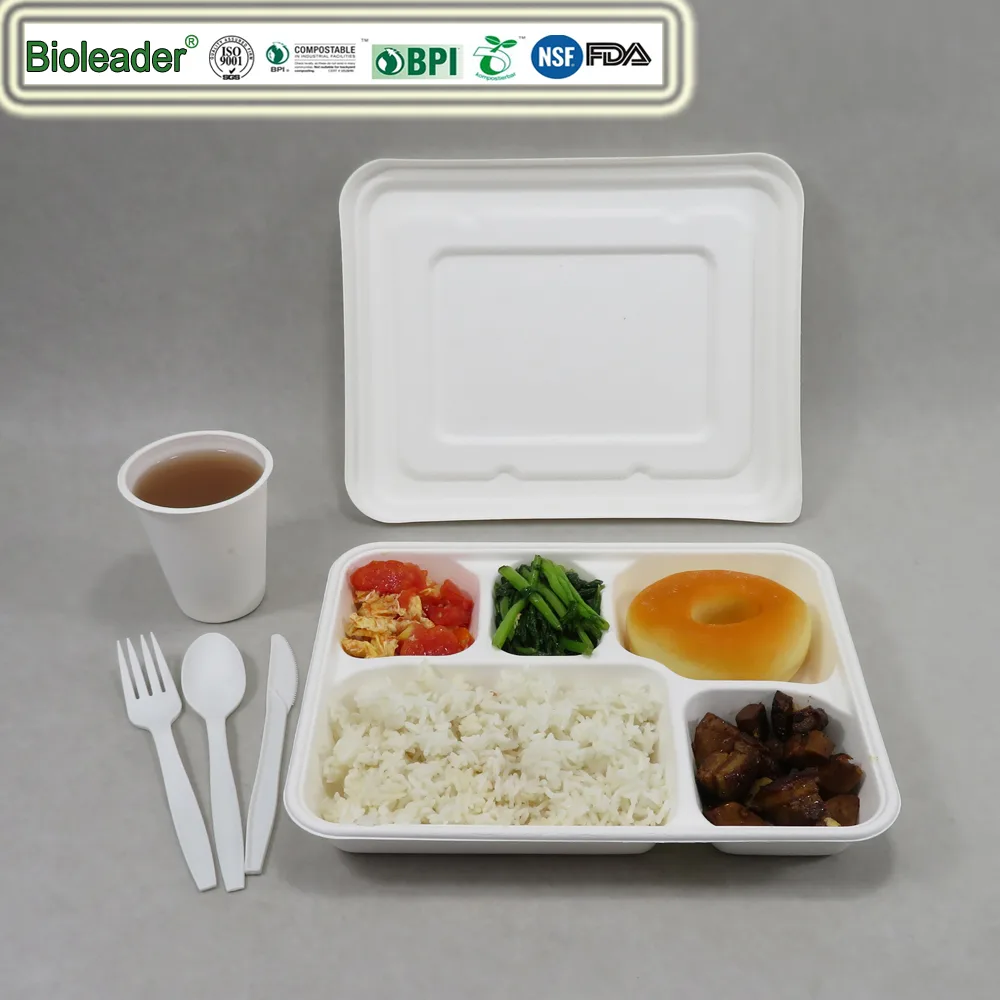Most Clamshells Fail in Composting—Here’s What Works
🌱 Introduction: The Clamshell Crisis No One Talks About
With the rise of takeout culture and food delivery apps, clamshell containers have become the go-to packaging choice for restaurants, cafes, and caterers. They're convenient, stackable, and easy to seal. But here’s the problem: most clamshell containers are not truly compostable—even when marketed as "eco friendly."
Many “green” containers contain hidden plastic linings or require industrial composting environments that few cities provide. In fact, studies show that most of these containers fail to fully break down, contributing to landfill overflow and microplastic pollution.
In this blog, we’ll examine:
-
Why many eco friendly clamshell containers don’t compost as claimed
-
What makes bagasse tray packaging a truly sustainable solution
-
How businesses can switch to biodegradable lunch containers that perform better in both function and environmental impact
♻️ The Compostability Myth in Clamshell Packaging
You’ve probably seen terms like “biodegradable,” “compostable,” and “eco-friendly” used interchangeably on packaging. But in practice, these terms have very different meanings.

In a 2022 peer-reviewed study published in Waste Management, researchers tested over 40 products labeled as compostable. Over 65% of them failed to fully break down in municipal composting conditions. This included containers made from paper with polyethylene (PE) linings and PLA-coated clamshells.
🔬 Scientific Research: Composting Realities
A 2022 study in Waste Management & Research compared sugarcane bagasse trays with PLA and PE-lined alternatives. Here's what they found:
-
Bagasse trays decomposed in just 75 days under aerobic conditions with no microplastic residue.
-
PLA-lined products required over 180 days and often left behind synthetic fragments.
-
Only certified compostable clamshell containers made from unlined bagasse passed EN13432 and ASTM D6400 standards.
This highlights the importance of material selection—not all biodegradable lunch containers are created equal.
🌾 Why Bagasse Trays Work
Bagasse is the fibrous byproduct of sugarcane juice extraction. Instead of burning it or discarding it as waste, it’s now repurposed into biodegradable food packaging like clamshells, trays, plates, and bowls.
✅ Key Benefits of Bagasse Trays:
-
Made from a renewable byproduct (no extra farming required)
-
Naturally compostable in both home and industrial composting systems
-
No added plastic linings or PFAS
-
Grease-, oil-, and water-resistant
-
Microwave and freezer safe
Unlike PLA or plastic-lined containers, bagasse trays decompose safely even if they end up in landfills or uncontrolled environments.
💡 Functional Advantages for Food Delivery
Aside from sustainability, eco friendly clamshell containers must meet performance demands—especially for hot, greasy, or heavy foods.
Bagasse trays perform better than most alternatives due to:
-
Heat resistance up to 120°C (248°F)
-
No warping or softening with moist foods
-
Durable structure for stacked delivery
-
Leak-proof for sauces and gravies
That’s why global chains and eco-conscious restaurants are turning to bagasse containers as the new standard in environmentally friendly containers.
💬 Customer Expectations Have Changed
In a 2023 NielsenIQ global report:
-
76% of consumers said they actively seek brands that offer sustainable packaging
-
52% would switch to a brand that offers compostable packaging over plastic—even at a slightly higher cost
Eco-conscious diners—especially millennials and Gen Z—are quick to notice if your takeout arrives in biodegradable lunch containers or not. Using certified compostable clamshell containers can increase brand loyalty and online ratings.
🌍 Regulatory Landscape: Get Ahead or Get Fined
Governments worldwide are banning or restricting single-use plastics:
-
The EU Single-Use Plastics Directive bans EPS and mandates sustainable alternatives
-
U.S. states like California, New York, and Maine have outlawed certain food packaging materials
-
India, Canada, and Chile are rapidly phasing out plastic-based food containers
Switching to bagasse tray solutions now will ensure compliance, reduce environmental fines, and prepare your brand for global markets.
🛒 Where to Buy Certified Bagasse Trays
✅ Recommended Supplier: Xiamen Bioleader Environmental Protection Technology Co., Ltd.
Why Bioleaderpack?
-
🌿 Specializes in bagasse trays and biodegradable lunch containers
-
🌍 Global export-ready supply chain
-
📜 Certified: BPI, OK Compost, EN13432, ASTM D6400, FDA, ISO9001
-
🏭 One-stop factory-direct service for custom packaging
-
✅ Offers eco friendly clamshell containers with OEM branding
❓ FAQ: 5 Google-Searched Questions Answered
1. What are the best materials for compostable clamshell containers?
Bagasse, unlined kraft paper, and certified bioplastics (with compostable certification) are top performers. Bagasse ranks highest for speed and completeness of composting.
2. Do eco friendly clamshell containers really compost at home?
Most PLA-based containers don’t. Bagasse trays, however, are home-compostable and decompose within 90 days without industrial composting.
3. Are biodegradable lunch containers microwave-safe?
Yes. Bagasse containers can handle heat up to 120°C (248°F) and are microwave- and freezer-safe.
4. How can I tell if my packaging is truly compostable?
Look for certifications like OK Compost, ASTM D6400, or EN 13432. Avoid packaging with PLA or PE linings unless stated as certified compostable.
5. Where can I buy compostable clamshell containers in bulk?
You can source directly from certified manufacturers like Xiamen Bioleader, who offer a full range of bagasse-based food containers.
📈 Conclusion: Clamshells That Deliver on Their Promise
Today’s consumers don’t just want good food—they want it delivered in packaging that reflects their values. Unfortunately, most clamshells don’t live up to the sustainability claims on their labels. They require unrealistic composting conditions or contain hidden plastics.
But bagasse trays are different. They compost cleanly, perform under pressure, and tell a sustainability story that customers want to hear. For food delivery businesses looking to stand out, switching to eco friendly clamshell containers made from bagasse is a smart investment in performance, planet, and profit.



Comments